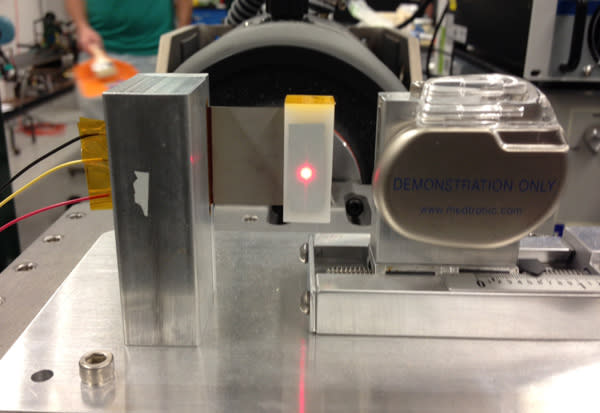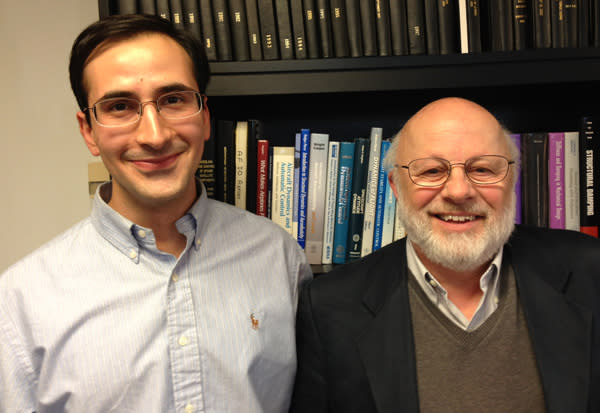New-generation pacemaker could be powered by the heart
The same material that sparks barbecue lighters to flame may soon be used to power pacemakers with the beat of the human heart instead of batteries, say researchers at the University of Michigan.
A new generation of pacemakers, devices that regulate the human heartbeat via electrodes and current, could eventually rely on piezoelectric materials, which, when they vibrate, generate a small amount of electricity.
Graduate research fellow Amin Karami and Daniel Inman, chair of the university’s aerospace engineering department, hope to develop a pacemaker that uses a tiny piezoelectric piece to collect pulses of electricity each time the heart beats. A hundredth-of-an-inch slice of brownish material vibrating in a contraption at their busy testing lab, in a building usually devoted to aerospace engineering, has already demonstrated it can generate 18 microwatts of power, enough to run 18 pacemakers.
“We’ve proven that it’s definitely do-able,” said Karami.
Piezoelectricity was actually discovered in the late 19th century in France by the Curie brothers, one of whom was married to famed physicist Marie Curie. In basic terms, piezoelectric materials give off current when squeezed. For instance, the clicking noise heard when pulling the trigger on a handheld barbecue lighter, or pressing the button on a gas grill lighter, is the sound of shaking or squeezing a small piezoelectric plate inside. The small spark of electricity released in turn lights the gas.
If successful, piezoelectric pacemakers could replace those run on lithium batteries which, like similar batteries that power cameras and watches, need replacing or recharging. Some last 10 years, while others require replacement several years sooner, said Dr. William Zoghbi, president of the American College of Cardiology. A piezoelectric power source doesn't require charging.
There are about 370,000 pacemaker procedures a year, according to the most recent data from the American Heart Association. About 3 million people worldwide use them, according to the American College of Cardiology.
Karami says that having a pacemaker that theoretically can last a lifetime will reduce the risk of complicated surgeries. Also, the battery-less device is also not affected by strong magnetic fields, such as those generated by MRIs, another concern for people with pacemakers.
Dr. Zoghbi said while pacemakers have improved the last 25 years, including smaller sizes and increased complexities, breakthroughs in battery life are welcomed.
“Any innovation that goes to improving heart function in the technology or capturing some electricity and deploying it in different ways is an improvement,” Zoghbi said, “particularly if we improve the outcome of the patients.”
Inman noted the University of Michigan team has technical issues to resolve. First they want to figure out if piezoelectric pacemakers could be made smaller and lighter than current devices. Then they need to ensure the device could generate electricity through the complete range of heart beat "tones" – from a resting heart to an excited one, and if each could be converted to the proper current, Inman said.
Finally, they have to figure out where to place the device close enough to the heart to obtain the best output.
Beyond pacemakers, the small battery-less generator could be used to power heart defibrillators that are implanted in the heart and shock it back to life when it fails. They could also be used in many other implantable medical devices.
“Let’s just say there are a lot of things that we’re learning that are battery powered and implanted in the body,” Inman said.
Research on the pacemaker stems from Karami’s interest in “energy harvesting,” the science of collecting small amounts of electricity from ambient energy. For example, subtle vibrations from cars driving over a bridge can be turned into energy to power remote devices for road traffic. Or vibrations from an airplane wing that could be harvested into electricity to power sensors, which was Inman and Karami's original inspiration.
“I looked at that and wondered, 'How would you power medical devices?’ ” Karami said. “Then I looked down at my chest and thought, “Well, the heart is something that vibrates."




